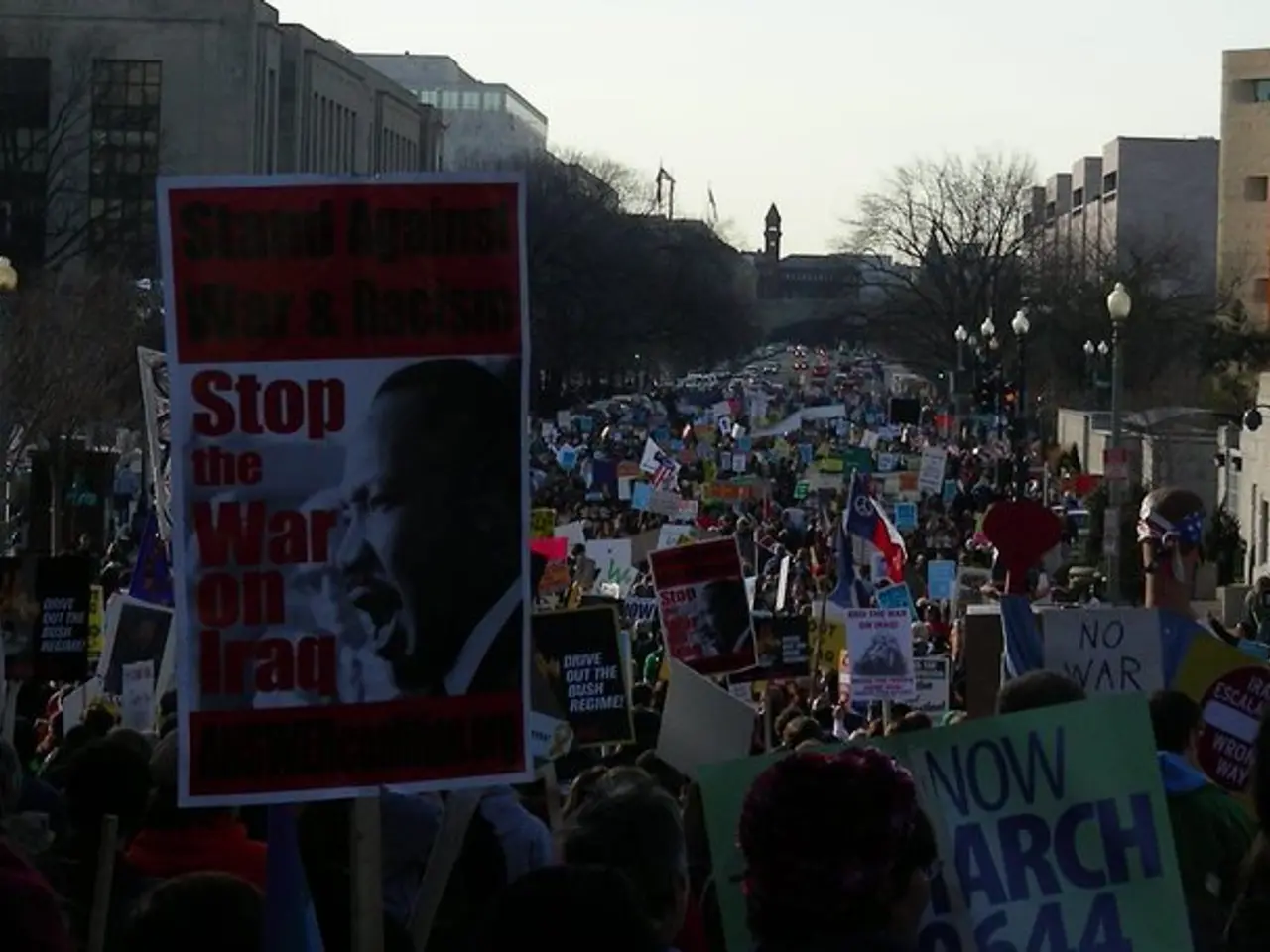Multiple fatalities reported amid Syria's escalating violence
In the heart of the Middle East, Syria continues to grapple with unrest and instability, six months after President Ahmed al-Sharaa's government took control of Damascus. The recent violence and unrest in Syria throughout 2025 have been driven largely by the fallout from the collapse of Bashar al-Assad’s regime in December 2024, which created a power vacuum and escalated sectarian and communal violence.
The new government of Syria has promised a "Syria for all" to the religiously divided country of around 23 million people, with the protection of minorities being closely watched both domestically and internationally. However, despite the government's efforts to restore stability in the country, politics in Syria remain fragile and prone to unrest.
Violence erupted in the southern province of Suwaida, resulting in at least 40 deaths and around 100 injuries. The unrest began after a Druze teenager was brutally beaten and robbed on the highway between Damascus and Suwaida. Local tribes were reportedly responsible for the initial attack, setting up a checkpoint and launching the assault.
In response to the attack, Druze fighters kidnapped Beduins, leading to further violence in the area. The Syrian Ministry of Defense has sent military units to try to stop the violence, with troops committed to protecting the civilian population in Suwaida. The ministry declared that restoring security and stability in Suwaida is a shared responsibility between the state and its citizens.
The Syrian Observatory for Human Rights reports that among the dead are 27 members of the Druze minority and ten Bedouins. The group Saraya Ansar al-Sunna, a previously unknown jihadist group, claimed responsibility for a suicide bombing at a church in Damascus in March, resulting in at least 25 deaths and over 60 injuries. The group has threatened more attacks, raising concerns about continued Islamist terror in Syria.
The fall of Assad’s regime dismantled centralized control, fueling sectarian violence, mainly targeting Alawite and Sunni communities. Fighters linked to the caretaker government, Syrian National Army militias, and former Assad regime elements perpetrated targeted massacres based on sectarian identity. The fragmented security landscape and weakened government authority have allowed militant groups, including the Islamic State, to attempt reconstitution and expansion, particularly exploiting areas with diminished control.
Territorial insecurity has been aggravated by displacement and violence in rural areas, with revenge attacks and executions causing mass displacements in Hama and other contested regions. External military actions, such as Israeli strikes in southern Syria, and persistent landmine contamination further worsen the humanitarian and security situations, impeding displacement return and livelihood recovery.
From March 6 to mid-March 2025, over 1,600 civilians were reportedly killed by armed militias supporting the Syrian transitional government, with total deaths in related clashes exceeding 1,000 according to monitoring groups. Sectarian massacres against Alawites resulted in hundreds of civilian deaths, with documented killings often involving direct interrogation and execution based on sectarian identity. Landmines and unexploded ordnance have caused over 400 deaths and nearly 600 injuries across Syria in the first half of 2025, underscoring ongoing dangers even outside direct conflict zones.
The Syrian caretaker government has claimed military operations aimed at regaining control and curbing violence, including a reported completion of a military campaign in western Syria aimed at stabilizing the region. However, the security vacuum and fragmented governance mean that efforts are countered by multiple armed groups and insurgents, complicating peace restoration. The international community, including the US military, has seen troop reductions in northeastern Syria, which correlates with increased Islamic State attacks, indicating challenges in controlling militant resurgence.
Humanitarian organizations report extensive needs for assistance, shelter, and protection amid displacement and ongoing insecurity, highlighting the necessity of both security and humanitarian interventions for sustainable peace. The new government is working with Druze leaders and the governor of Suwaida to calm the situation in the area, but the road to stability remains long and fraught with challenges. Syria, a country that has been ravaged by a civil war for over a decade, continues to struggle to restore normality after years of war and fragile peace.
- The Syrian government, in its attempt to establish stability, has outlined community and employment policies to foster unity among its religiously diverse population, understanding that these policies are closely monitored in the context of international politics and general news.
- As Syria navigates its fragile political landscape, the ongoing violence in areas like Suwaida, resulting from war-and-conflicts and sectarian tensions, poses a significant challenge to these policies and the country's overall quest for peace and security.







